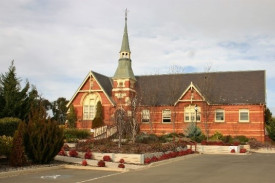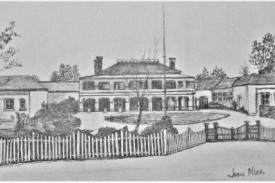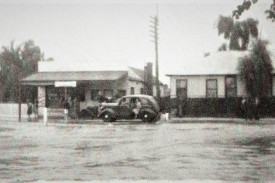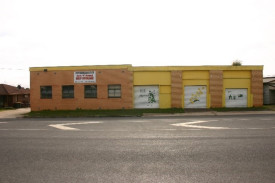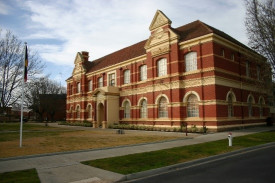Goldfields Getaway
30 November, 2021
John Moir's farewell tour
Tours around the Central Goldfields – my last hurrah as we are moving to a smaller holding down south. Throughout the past seven years I have completed many stories about the area within a radius of 50 kilometres of Dunolly. What is unappreciated...
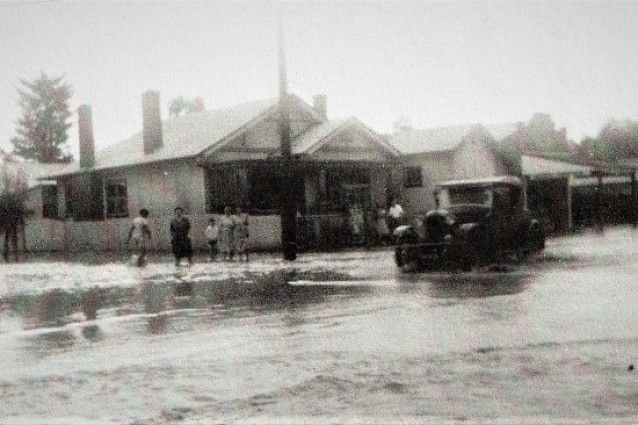
Tours around the Central Goldfields – my last hurrah as we are moving to a smaller holding down south.
Throughout the past seven years I have completed many stories about the area within a radius of 50 kilometres of Dunolly. What is unappreciated by many is the wonderful tourist offering within the shire.
Within the towns are many historic buildings and features of a mining town. There is the most original and authentic Cobb and Co Station in Australia and the majestic features of a granite rock conglomeration at Melville Caves. Most of the gold was found and is still being found within that same radius. In fact, more gold has been found in the Dunolly area than in any part of the world.
Maldon is considered a national treasure and an example of a mining town. Take a tour of Dunolly and compare the two. Ballarat’s Sovereign Hill is a constructed replica – Dunolly, Talbot, Maryborough, Rheola and so on could all be reconstructed as a real resort. Dunolly has it now.
Maryborough hides most of its history or has lost its history with interesting council decisions. Where was the Poppet Head for the underground mine in Maryborough? It is suggested it was over the shaft that is now under the water in Phillips Gardens. I have personally seen traces of the underground drives when the land above collapsed in Tuaggra St back in the 1940s. There are apparently two levels of drives under Maryborough.
My cousin studied the goldfields and suggested there was evidence that there were of the order of two million people within the Golden Triangle, including the fringes of Bendigo to Ballarat to Ararat.
The centre of that area happens to be Dunolly where so much of the mining took place. More than 100,000 miners (including 40,000 Chinese) were supported by a myriad of ancillary personnel. I have first-hand information of a nurse who lived in Tarnagulla who, as she walked to work in Dunolly, spoke to miners all the way between the two towns.
There are stories about the diggings in the lead under Dunolly where people could pass along a stretch that went around two kilometres. Where a large gold nugget was moved un detected, to be weighed at the bank after being cut up because the scales could not handle it. Apparently in more recent times nuggets of similar size have been found but were never officially recorded – just sold.
The first Poseidon Mine was between Newbridge and Laanecoorie. A new mine has recently started up in the same area. At least 25 official mines are currently operating throughout the 50-kilometre radius mentioned, with another to restart within the Sydenham Hill area soon.
Because I have spent so much time talking about all the areas around Maryborough, I think it best if I do a small down-memory-lane chat.
Maryborough today has a population of around 8000 people, similar to 1947 when I came to the town as a young lad. I attended East Primary School (number 2828) before sitting an entrance exam to attend the Maryborough Technical College that has now become the Shire Headquarters. The complex also contained the School of Mines.
In the earlier days we only had one university in Victoria, so to ensure all the skills needed for the booming mining industry and for the thriving agricultural pursuits, Schools of Mines were established. I completed a Diploma of Mechanical Engineering at the Maryborough School of Mines before heading to Melbourne to work as an engineer for the Department of Supply and later Department of Army.
I worked at a number of things in my youth, growing vegetables for Trainor’s Green Grocery, paper-boy for Bill Ritchie delivering to the southern side of High St. I would deliver the Argus, Age and Sun in the morning, and Herald and Advertiser (two nights) in the afternoons. There were other activities throughout the year and specials such as selling programs for New Year’s Day and acting as assistant to Mr Singh, the surveyor for the new sewerage system.
So, I have a fair knowledge of the town. I will concentrate on the area where I believe the greatest change has occurred – Tuaggra St all the way up Argyle St, starting at the hospital end. The hospital has changed dramatically and it is great news to hear about the multi-million-dollar changes to take place in coming years.
So, head down and the building on the right was, I believe the library, and on the opposite corner was Maples Furniture (where the food store is currently). Cross with the lights to KFC and there is the site of Colemans Bikes and car tyres with the internally set leadlight showing the original windows.
The next place I have in my memory that still exists is the Tyre Business and it specialised in tyre re-treads. Woollies is new but on the same side across Napier St was Phelan’s Joinery. Next was a house (James family) that is now REPCO, then a vacant block (our veggie garden) a pair of shops and three flats were located. My family owned that group with the Burke St extension going right through where the general confectioner shop’s location was situated. On the opposite side of the street the two brick houses were the Wilkes family and Charlie Williams (a noted builder) homes.
On the corner where the carpet store is located was a house and shop that belonged to Ken Hill, a noted motor bike rider who lived in the house and ran his motor bike business in the shop. Across Burke St was the MKM (Maryborough Knitting Mill) where Mr McKenzie, (who lived at Elmhurst) was the manager. Next to the Mill was the same shed and magnificent home of the Crameri Family as is standing today.
Where the Crameri Store is located was a house and the shop was the local butcher’s shop. Same side and across Burns St was the Stone Mason before coming to the railway gates and the foot crossing (a bridge I carried my bike over many times). Go back to Crameri’s and cross over Burns St to McDonalds that was the Railway Hotel and next to it was a service station.
There was an open space right to a street that is no longer there but marked with elm trees or oak trees that were on the extension of Nolan Street that went straight to the station. That open space was the sports ground for a number of events including physical education. Along that side of the original street were Bristol Units used as class rooms for English and technical drawing plus general use.
On the opposite side of that street was the current double story building as the main school that had the physics and chemistry/metallurgy rooms followed by a shelter shed.
Returning back to the cutting that once was a set of railway gates. On the opposite side of the railway there was a large signal box and a little further toward the station was a large water tank for the steam engines to fill up.
Going up Argyle St a few bits are interesting from the past. The beautiful brick home on the first corner on the right had a magnificent wrought iron fence. The small church was given a shake up in the storm of NYE 1960 by shifting it sideways about six feet. It was amazing that it did not break up or fall over – unlike Lowry’s Cordial Factory which lost its back roof with a full double summersault and landed in the paddock behind (there is a house there now). The top end of Argyle St has been closed.
On the opposite side of Argyle and Gillies St is a plain cream brick building, now used for storage. This building was originally built by my father John Moir (Jock) as the first pasteurising dairy in the area. He also installed and operated the pasteurisation plant for the Lovett family. The old school was under the guidance of Mr Graham as head teacher in the ’40s and '50s and the building has had an amazing revival as a retirement facility. There was a dam at the back where an oval now exists.
If you go down Gillies St toward Majorca Rd you come to the sports complex. This was once the show grounds and it had a hall. In around 1957 Bill Walker set about establishing a basketball team to play in the Ballarat Competition. This was before the local league started. Well, we practiced in any hall we could find and the players often passed a high ball through rafters. However, we won the premiership in the lower grade followed by the premiership in the top grade all to the credit of Bill and a lot of help from Neil Thornton (our tallest) and Chris Kerr our fastest small. At the 50-year reunion only three were left (Neil, Jim McKenzie and myself).
I could go on about the original P&N, the three chaff mills, Phelan’s houses, wireworks, flour mills, mundic heaps, etc but that is it all for now folks. I may do a few cameos in the future but we leave with many great memories and love the fact that Maryborough is a great shopping place now, as good as any in Australia. It has very good medical facilities and they will get far better into the future taking some pressure off the ever-growing Ballarat and Bendigo. If the rail service could be reinvigorated then that would be closer to perfect.
